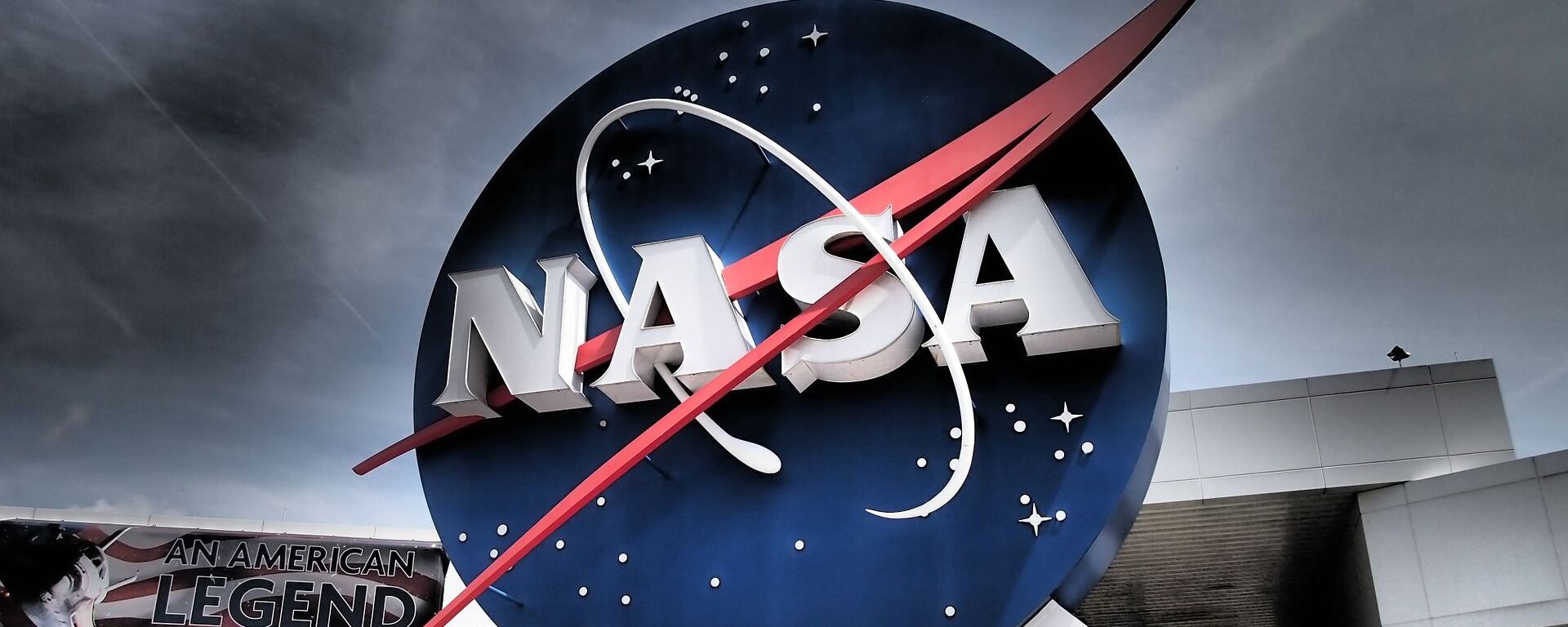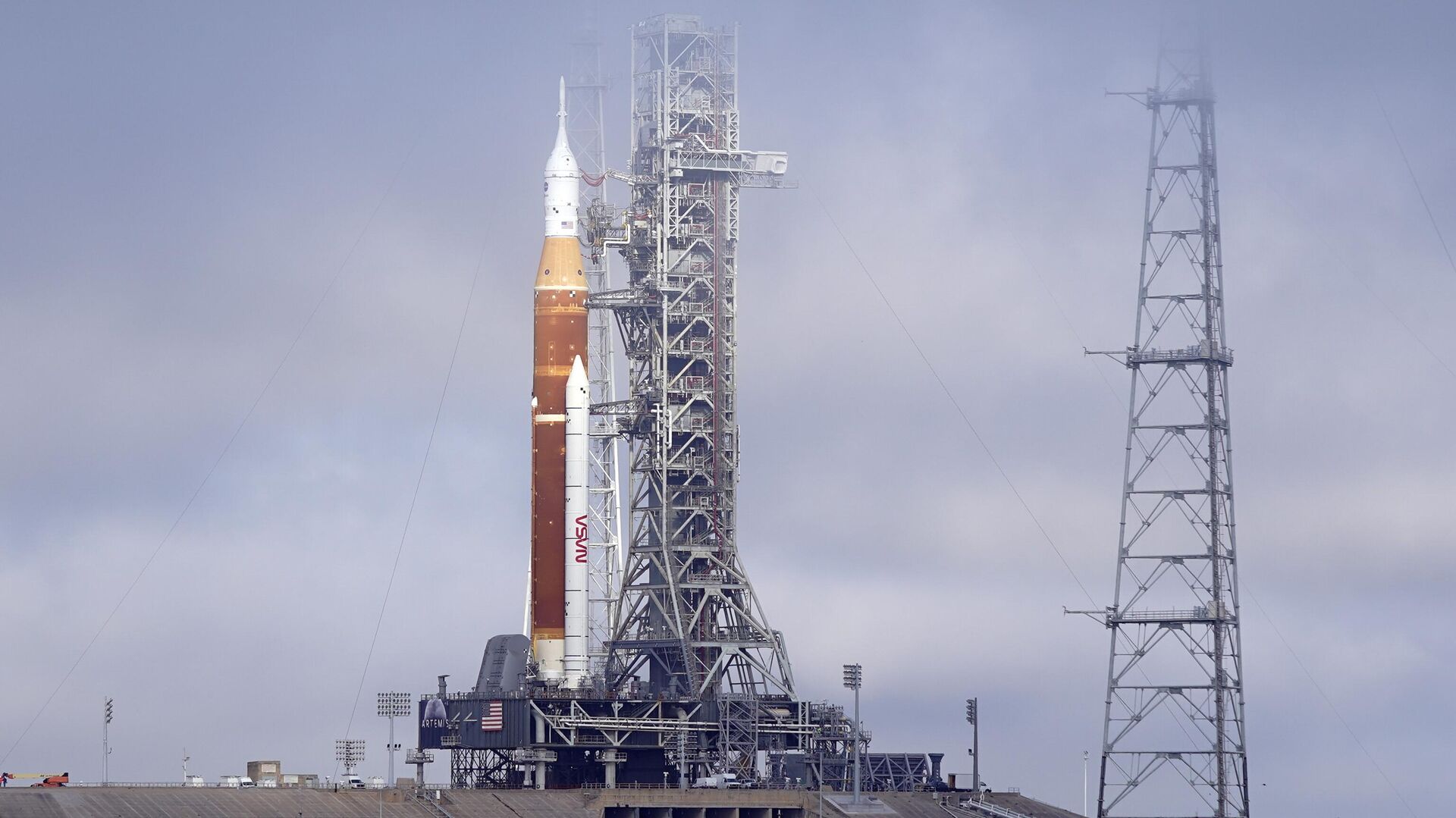https://sputnikglobe.com/20220402/nasas-artemis-1-begins-critical-wet-dress-rehearsal-ahead-of-summer-liftoff--1094408563.html
NASA’s Artemis 1 Begins Critical ‘Wet Dress Rehearsal’ Ahead of Summer Liftoff
NASA’s Artemis 1 Begins Critical ‘Wet Dress Rehearsal’ Ahead of Summer Liftoff
Sputnik International
Artemis 1 is the first planned unscrewed test flight for NASA’s Artemis program, which aims to set a long-term human spaceflight goal to Mars after landing... 02.04.2022, Sputnik International
2022-04-02T00:31+0000
2022-04-02T00:31+0000
2023-06-20T17:11+0000
nasa
space launch sysyem (sls)
dress rehearsal
spacecraft
florida
us
moon
boeing
mars
space
https://cdn1.img.sputnikglobe.com/img/07e6/04/01/1094408505_0:161:3071:1888_1920x0_80_0_0_b37e5c81d53b4c589e96feef2730bfe1.jpg
NASA’s Artemis program commenced its three-day “wet” dress rehearsal at 5:00 p.m. Eastern Daylight Time on Friday, marking a major milestone for the program team and the SLS, a new flagship rocket designed to transport both humans and cargo into deep space.“Wet” dress rehearsals refer to tests in which a spacecraft’s rockets are loaded with liquid propellant necessary for take off.At approximately 5 p.m. EDT, members of the Artemis program team arrived at their respective stations at the John F. Kennedy Space Center in Merritt Island, Florida. Before the “call to stations,” team members reportedly conducted a number of checks and closed the crew module hatch of NASA's Orion capsule.The SLS rocket will launch NASA’s Orion spacecraft without a crew for its initial four-to-six-week moon mission later this year. Boeing, the space agency’s primary contractor, has been assisting with the development of the costly rocket since the early 2010s.A livestream of the test has been active since later Friday morning. NASA, citing International Traffic in Arms Regulation (ITAR) restrictions related to the SLS’ rocket, noted that it does not plan to provide live commentary or audio with the stream.ITAR, enforced by the US Department of State, is a regulatory regime designed to bolster national security via the restriction and control of defense and military-related technologies. In many cases, the tech has been identified on the US Munitions List and is either blocked from being exported, or requires further approval before issuing it to a foreign country, entity, or national.ITAR also covers “technical data” related to the technologies in question.NASA’s most-recent update detailed that teams at the rocket’s LC-39B launch pad were filling the sound suppression system with water.Because the SLS is expected to create about 176 decibels at liftoff, experts designed a water system capable of dampening and absorbing the noise.The Friday evening “call to stations” marked the 45-hour countdown clock for the wet dress rehearsal. The clock will run until 33 seconds prior to ‘launch,’ and then the countdown will be reset to 10 minutes before T-0, allowing the Artemis team to run through the steps once again. The second countdown stops with less than 10 seconds before liftoff.More than 700,000 gallons (3.2 million liters) of propellant will be pumped into SLS tanks on Sunday, according to NASA. Later that day, team members will be polled to determine whether they’re ready to enter a mock terminal count.The SLS rocket will launch NASA’s Orion spacecraft without a crew for its initial four-to-six-week moon mission later this year. Boeing, the space agency’s primary contractor, has been assisting with the development of the costly rocket since the early 2010s.Let's stay in touch no matter what! Follow our Telegram channel to get all the latest news: https://t.me/sputniknewsus
https://sputnikglobe.com/20201214/russia-suspects-nasas-artemis-moon-program-might-pursue-military-goals-roscosmos-says-1081454568.html
florida
mars
Sputnik International
feedback@sputniknews.com
+74956456601
MIA „Rossiya Segodnya“
2022
News
en_EN
Sputnik International
feedback@sputniknews.com
+74956456601
MIA „Rossiya Segodnya“
Sputnik International
feedback@sputniknews.com
+74956456601
MIA „Rossiya Segodnya“
nasa, space launch sysyem (sls), dress rehearsal, spacecraft, florida, us, moon, boeing, mars, space, space exploration
nasa, space launch sysyem (sls), dress rehearsal, spacecraft, florida, us, moon, boeing, mars, space, space exploration
NASA’s Artemis 1 Begins Critical ‘Wet Dress Rehearsal’ Ahead of Summer Liftoff
00:31 GMT 02.04.2022 (Updated: 17:11 GMT 20.06.2023) Artemis 1 is the first planned unscrewed test flight for NASA’s Artemis program, which aims to set a long-term human spaceflight goal to Mars after landing humans on the moon by 2025. The mission, slated for as early as June 1, will also serve as the first flight for NASA’s Space Launch System (SLS) and the Orion crew capsule.
NASA’s Artemis program commenced its three-day “wet” dress rehearsal at 5:00 p.m. Eastern Daylight Time on Friday, marking a major milestone for the program team and the SLS, a new flagship rocket designed to transport both humans and cargo into deep space.
“Wet” dress rehearsals refer to tests in which a spacecraft’s rockets are loaded with liquid propellant necessary for take off.
At approximately 5 p.m. EDT, members of the Artemis program team arrived at their respective stations at the John F. Kennedy Space Center in Merritt Island, Florida. Before the “call to stations,” team members reportedly conducted a number of checks and closed the crew module hatch of NASA's Orion capsule.
The SLS rocket will launch NASA’s Orion spacecraft without a crew for its initial four-to-six-week moon mission later this year. Boeing, the space agency’s primary contractor, has been assisting with the development of the costly rocket since the early 2010s.
A livestream of the test has been active since later Friday morning. NASA, citing International Traffic in Arms Regulation (ITAR) restrictions related to the SLS’ rocket, noted that it does not plan to provide live commentary or audio with the stream.
ITAR, enforced by the US Department of State, is a regulatory regime designed to bolster national security via the restriction and control of defense and military-related technologies. In many cases, the tech has been identified on the US Munitions List and is either blocked from being exported, or requires further approval before issuing it to a foreign country, entity, or national.
ITAR also covers “technical data” related to the technologies in question.
“We're really, really super sensitive to cryogenic launch vehicles that are of this size and capability, [and] are very analogous to ballistic type capabilities that our countries are very interested in,”
senior NASA official Tom Whitmeyer told reporters earlier this week.
NASA’s most-recent update detailed that teams at the rocket’s LC-39B launch pad were filling the sound suppression system with water.
Because the SLS is expected to create about 176 decibels at liftoff, experts designed a water system capable of dampening and absorbing the noise.
“The system reached a peak flow rate of more than 1 million gallons per minute,” officials estimated during a 30-second water flow test in September 2019.
The Friday evening “call to stations” marked the 45-hour countdown clock for the wet dress rehearsal. The clock will run until 33 seconds prior to ‘launch,’ and then the countdown will be reset to 10 minutes before T-0, allowing the Artemis team to run through the steps once again. The second countdown stops with less than 10 seconds before liftoff.
More than 700,000 gallons (3.2 million liters) of propellant will be pumped into SLS tanks on Sunday, according to NASA. Later that day, team members will be polled to determine whether they’re ready to enter a mock terminal count.

14 December 2020, 13:55 GMT
The SLS rocket will launch NASA’s Orion spacecraft without a crew for its initial four-to-six-week moon mission later this year. Boeing, the space agency’s primary contractor, has been assisting with the development of the costly rocket since the early 2010s.
Let's stay in touch no matter what! Follow our Telegram channel to get all the latest news: https://t.me/sputniknewsus 


